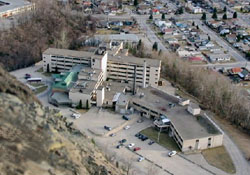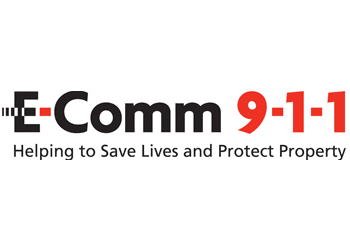EDITORIAL: How to raise $60 million. Regional healthcare faces serious questions
Are you a saver, or are you a spender? The recent discussions at the Regional Hospital Board have sounded somewhat like a bank commercial. The question at hand however is a serious one and the board has recently opened the discussion on perhaps the most significant question healthcare in our region will face over the next twenty years.
The IHA recently notified the West Kootenay-Boundary Regional Hospital District Board (WKBRHDB) that they should be expecting major capital expenses in our region over the next five to 20 years. Major to the tune of $150 million dollars. What that chunk of money is to be spent on over that time wasn’t explained. This request in advance for what will amount to perhaps up to $60 million dollars of taxpayer dollars in this region over the next twenty years with no clear idea what that money will used for has opened up a whole host of philosophic and strategic decisions to be made by the hospital board.
The first significant question out there centres on just what role the hospital board interacts with the IHA and how much say the board should have in decision made for our health district. Presently the WKBRHDB is made up of 13 directors from the RDKB, 17 directors from the RDCK, and one director from the Okanagan Similkameen. Right now, the IHA presents its list of priority capital projects to the hospital board once a year. It is then the hospital board’s responsibility to generate 40% of those costs from regional taxpayers.
The fundamental principle of accountability suggests that some influence over the allocation of locally taxed funds is required to ensure local accountability. Many regional hospital district representatives are frustrated with their lack of input in establishing the capital priorities of the Health Authorities.
“A money collecting agent, that’s pretty much what we are,” commented Councilor Kathy Wallace of Rossland who also sits on the regional hospital board. “It’s a rather frustrating position. If you’re an elected official sitting on a hospital district board, the assumption is that you’d have some means of helping make decisions that make a direct impact on your community’s health care. That would be your assumption. But merely all it is is a provision of 40% of capital projects for the whole region.”
All of this hits an exposed nerve when talking about a regional service. Since the Regional District hospital boards of the Central Kootenay and Kootenay Boundary merged there has been both a fear of regionalizing and centralizing the service as well as the continuing question of which hospital in the area would become the regional hospital if such a decision had to be made. So far the Nelson hospital has continued operating, albeit at a reduced level, and the Castlegar hospital has continued operating at an even lower level. The Kootenay Boundary Regional Hospital has remained in Trail since the amalgamation; however, with talk of $150 million dollars in capital expense coming to the region, some speculate that it could perhaps be to build one large centralized hospital in the region.
What the money could be used for has not been identified however so asking the board to sign on for a major capital project without knowing what that project is or if it fits with best interests of the region makes it very difficult to even have the discussion on how to pay for that expense.
Just how this region would cover a $60 million dollar share of a $150 million total capital expense is a major part of the discussion, however. It is a rather philosophical and yet also strategic question that comes down to this: is it better to raise taxes now to build a reserve for the anticipated major future expense, or is it more prudent to wait until the expense happens and borrow at that time?
There are legitimate arguments to both sides of the question.
Some may ask why they should contribute tax dollars now that will be used for a project they might not be around to see happen. Others may look at changing demographics and wonder if, twenty years from now, there will be more people needing hospital services and fewer working taxpayers to cover the expense. In that scenario, it could be argued that those who are in the best financial position now (and will be needing greater hospital services in twenty years) should help pony up for the expenses now while they can afford it.
One perhaps unwritten rule when it comes to taxation is that stable tax rates are greatly desired over roller coaster tax rates. Stable tax rates make it significantly easier to plan future expenses and provide a level of assurance for businesses, organizations and people in the area. That principle would tend to say a small tax raise over a longer period would be favoured over borrowing as the expenses come up and raising taxes more dramatically over a shorter period of time.
There is one more issue to be thrown into the pot here as well, however, that could present an additional third possible solution to raising the $60 million.
The previous Kootenay Boundary Health Board (the one that existed prior to the merger with the RDCK) still has a level of legacy debt and accompanying debt servicing charges. The amalgamated board also has existing debt that needs servicing. Questions that Kathy Wallace has submitted to the board on Rossland’s behalf include: ‘just how much debt is legacy debt?’, ‘how much is from the new board?’, ‘what are the debt servicing costs?’, and ‘when will the hold debt come off the books?’.
If the previous board’s legacy debt comes off the books in the near future, the present debt servicing costs come back into play. One option to start building a reserve could be to maintain current tax rates after the old debt comes off the books and use the funds that were servicing that debt to start building a new reserve. In that scenario, tax rates remain the same. The questions will be ‘how much of that debt is legacy debt?’, ‘when will it come off the books?’, and ‘how much money does that free up if tax rates are maintained?’.
This would appear to be the least intrusive method to the tax payer; however whether the amount able to be put towards the reserve would be adequate to hit the $60 million mark is yet to be determined.
If the decision was made today to start saving now for the future unknown project(s) it is expected that the hospital tax Rosslanders currently pay would double. At present Rosslanders pay $15/$100,000 in residential assessment or $36 for an average Rossland home of $260,000. If we were to start building the reserve now, it is expected that rate would jump to $30/$100,000 in assessment or $72 for an average Rossland home.
At first one might think that doubling our hospital taxes sounds egregious but when breaking them down to a per person basis, it’s hard to argue that even paying $72/year rather than $36 per year is a cumbersome expense for having upgraded health care facilities in the region.
That said, though, is the principle of not committing money to a project without knowing what the project is too big to overcome to perhaps initiate a system now to soften what could be a big cost blow five to twenty years down the road? Perhaps the question isn’t as much, ‘do we spend or save?’ but rather, ‘what do we spend on and how do we decide what is needed?’.
Overall, it’s a discussion with huge scope and potentially large consequences for the region and our healthcare. At this stage, the one principle that should be held as the filter for any decision, whichever way the discussion goes, is, ‘what is best for the people of the West Kootenay Boundary and how do we best serve their health-care needs?’.
The best way to make sure that happens is for all of us to have a say and offer up our input to those who are involved in the discussions. For those interested, there will be an open meeting of the hospital board in Castlegar at the recreation complex on Novemberr 17th.
What would you do?
























